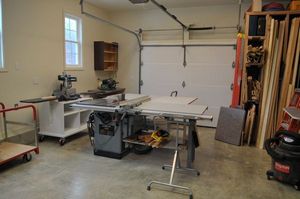Soaring fuel cost may give the airline industry its much needed justification for excuses concerning wage inequality. Factors of production directly influence an industry’s ability to hire and pay workers. However, Card (1996) and Jones (1998) show that wage inequality has existed ever since the deregulation of the airline industries in the late 1970s. The entrance of competition into the airline industry gave consumers the opportunity to travel at prices much lower than before. Bitter price wars erupted between carriers forcing the dominant carriers to cut cost in different areas to maximize profits. Unfortunately, the wage of the employees in the airline industry suffered the biggest. As Card and Jones point out, the market settled with new equilibrium levels and profit maximizing strategies developed. One of the biggest advancement in Air travel came in the form of technology. Express ticket processing via the internet and phone systems greatly reduced opportunity cost and increased rents (Carter, 1996). Now that airlines have been able to regain ground from initial losses due to deregulations, profits continue to soar and worker earnings remain stagnate.
The broad range of employment areas include pilots, management, secretaries, ticketing personnel, flight attendants, mechanics, baggage handlers, and more. The airline industry employs some of the highest investments in human capital than any other industry (Card, 1996). However, continuing cuts in pay and a lack of standard wage compensation, industry wide, further shows the truth that not only does wage inequality exist, but pressures for higher productivity from air carriers continue to widen the gap.
Wage inequality in the airline industry is measured in different ways. Research on labor earning performed by David Card in 1996 measured inequalities by evaluating micro data from current population studies and using Interquartile range as and index of measurement. These measurement methods showed that wage earning in the industry is down 10% since deregulation began. Because profit margins remain positive for airline industries, even the face of competition and fuel prices, it’s easy to see the existence of wage inequalities of airline workers.
Only a handful of economic studies exist showing how labor earnings were affected by the deregulation of the airline industry. David Card, in his working paper, “Deregulation and Labor Earnings in the Airline Industry” provides great insight into how deregulation has impacted labor earnings in the airline industry. Card, in studying deregulation of the airline industries in the late 1970s, shows how early fierce competition drove consumer cost down and with that, lowered wages across a broad range of employment in the industry. During regulation periods, unions fought to maintain employees share of the rents (returns that exceeded the opportunity cost of doing business) acquired by the airlines. Deregulation caused downward pressure on marginal cost as predicted by economist. However, as Card (1996) suggest, when market equilibrium continued to solidify and rents increased, wages did not increase.
Measured by micro data in monthly current population surveys (CPS), wages remain 10% lower in all airline occupations than they were before deregulation. Interquartile range (The measure of the dispersionof values; money) used as an index shows the wage inequalities faced by airline workers compared to deregulation eras. In addition, wage inequality is shown by measuring wage differentials between airline industries and non airline industries. Since deregulation, the gap between airline workers and non-airline workers has diminished greatly. Using human capital as a coefficient, we find that airline workers tend to be more educated than that of any other industry. With a high investment in human capital (education, training, etc…), current wages misrepresent actual value.
The transition into wage inequality for airline workers did not come without fierce resistance from airline employees. Sarah Jones, in her 1998 article “Soaring Profits, Stagnant Pay Fuel Workers’ Anger in US Airline Industry”, demonstrates the efforts of airline workers to increase their share of rents and return to wage equality. Increasing profits from wage reductions, cost cutting, and technology continue to frustrate workers throughout the airline industry. Jones gives an example of worker frustration surrounding issues with Northwest airlines in 1998. Cuts in airline worker wages, creating perceived wage inequalities, lead to retaliation on the part of airline workers. Retaliation came in the form of adhering to the letter of the safety laws. Because workers have the right to ground planes due to safety, workers would ground planes that had what management considered minimum impacting issues. Management responded with discipline on workers for trivial infractions. Eventually these lead to strike talks and federal government involvement. Showing an important principle in economics, governments have the ability to influence market outcomes.
In addition to cutting wages, Jones explains how various airlines are demanding greater productivity from their employees. At the same time, airlines are refusing to hire full-time employees and relying on part-time and contract employment and seeking revision on tiered payment for airline pilots. Jones states “”The struggle against inequality strikes at the very basis of the profit system. In whose interest will society be organized? Is it in the interest of the corporate elite or the interest of the masses of working people?”
One would get little argument from the statement that businesses are in business to make money. However, the airline industry continues to maximize profits at the expense of their employees. Many positions in the airline industry require job specialization from piloting crafts, mechanics, security, information and technology, and more. As advantages of opportunity for employees develop in other industries, the airline industry will see demand for positions in their industry greatly diminish. It seems unfortunate that this industry would drive employment numbers down to almost inoperable levels before correcting issues surrounding wage inequality. Another principle of economics tells us that people respond to incentives. These incentives will continue to draw employment away from the airline industry and will be the only measure to make employment in this industry more attractive.
Refrences:
Card, D. (1996). Deregulation and Labor Earnings in the Airline Industry. In National Bureau of Economic Research. Retrieved May 27, 2008, from http://www.nber.org/papers/w5687
Jones, S. (1998). Soaring profits, Stagnant Pay Fuel Workers’ Anger in US Airline Industry. Retrieved May 28, 2008, from http://www.wsws.org/workers/1998/may1998/nw-m7.shtml



